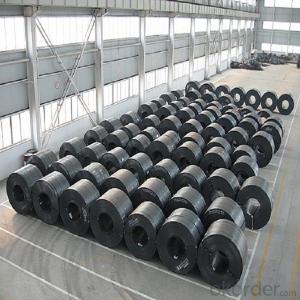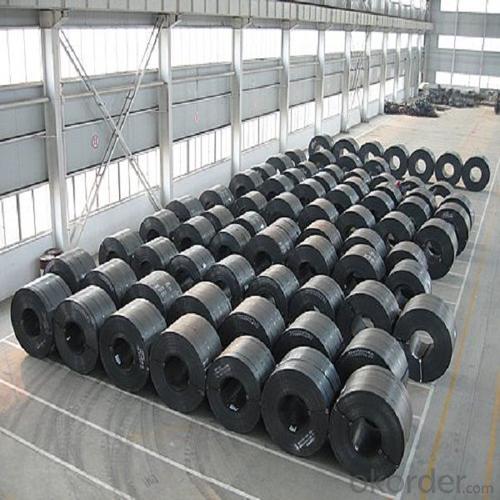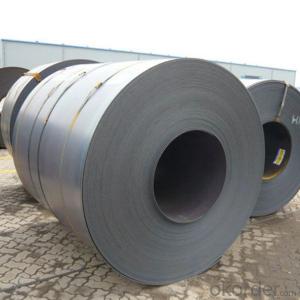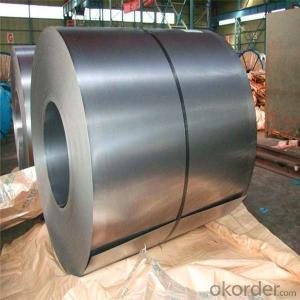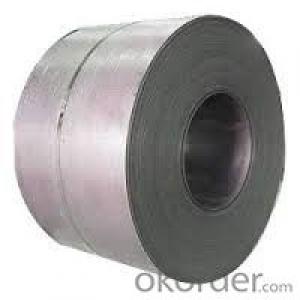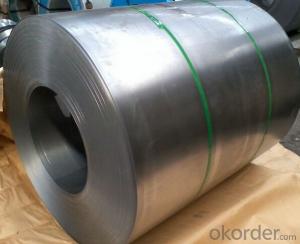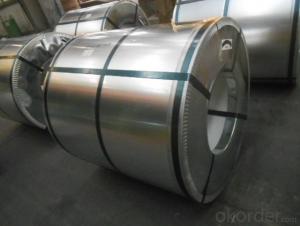Hot Rolled Steel Coil Chinese Supplier Made in China
- Loading Port:
- China main port
- Payment Terms:
- TT OR LC
- Min Order Qty:
- 25 m.t.
- Supply Capability:
- 50000 m.t./month
OKorder Service Pledge
Quality Product, Order Online Tracking, Timely Delivery
OKorder Financial Service
Credit Rating, Credit Services, Credit Purchasing
You Might Also Like
Specification
Standard:
JIS,ASTM,EN,DIN,GB
Technique:
Cold Rolled,Hot Rolled
Shape:
U Channel
Surface Treatment:
Dry,Oiled
Steel Grade:
Q195,Q235,HRB400,Q215
Certification:
ISO,SGS,BV,CE
Thickness:
1.8mm-16mm
Width:
1000mm-1600mm
Length:
requirement
Net Weight:
23mt
Packaging:
Standard Export Packing
Product Description
Q195,Q235,ASTM gradeB,gradeC,GradeD,JIS SS400,EN S235JR hot rolled steel coil1.product: hot rolled steel coil, SPHC.
2.standard: GB,ASTM,JIS,EN,IS
3.delivery condition: hot rolled or annealed
4.delivery time: within 30days after L/C or T/T deposit
5.size: thickness 1-4mm
width 800-1600mm
6.coil weight: 2.5-3mt
7.packing method: bundled with steel strip
8.payment terms: 100%L/C at sight or 30%T/T deposit +70%balance against B/L copy.
9.MOQ: 50mt for single size
10.chemical compostion and technical property:
| Grade | Chemical Composition | ||||
| C | Si | Mn | S | P | |
| Q235A | 0.14-0.22 | 0.17-0.30 | 0.35-0.65 | ≤0.050 | ≤0.045 |
| Q235B | 0.12-0.20 | 0.17-0.30 | 0.35-0.67 | ≤0.045 | ≤0.045 |
| Q235C | ≤0.18 | 0.17-0.30 | 0.35-0.80 | ≤0.040 | ≤0.040 |
| Q235D | ≤0.17 | 0.17-0.35 | 0.35-0.80 | ≤0.040 | ≤0.035 |
| technical property | tensile strength | elongation | yield strength | hardness | reduction area |
| ≥420MPa | 25% | ≥250MPa | ≥156HB | ≥55 | |
Products Picture:

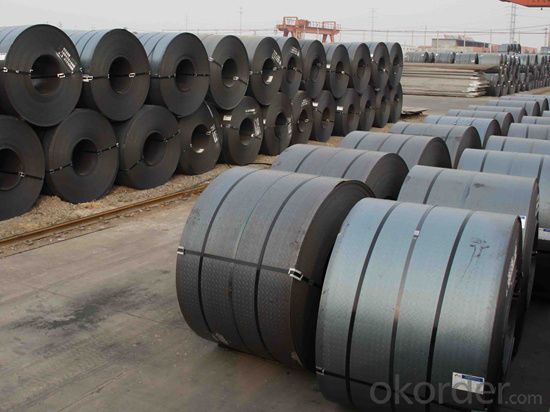
FAQ
1. Q: What's the MOQ?
A: Our MOQ is 25mt.
2. Q: What's the delivery time?
A: It will take about 30 days after TT or L/C.
3. Q: What is the payment terms?
A: T/T, L/C at sight
4. Q: How does your factory carry out quality control?
A: We attach great importance to quality control.Every part of our products has its own QC.
5. Q: What certificate do you have?
A: We have SGS, ISO9001 etc. Also we can apply any certificate if you need if the qty is OK.
- Q: Whats the difference in composition? When LTCS is used generally?Whats the temperature range, that these materials can be used? Is there any relation between Killed carbon steel, LTCS, stainless steel, carbon steel(normal)? How to categorise/classify these?Thankyou very much in advance..
- Low Temperature Carbon Steel
- Q: Is condensation on steel caused from water being pulled out or is the condensation formed from the air around the steel object?
- steel is made from very high temperature iron. water would vapourize at such high temperature. adding a little bit carbon, mix it well with iron, quench (dip it into water); water around the ingot would sizzle. water inside the ingot would vapourize. then the iron turns into steel called martensite. condensation means water are materializing from the air on cold surfaces. there is no water molecules inside steel.
- Q: What is the average cost of shipping steel coils?
- The average cost of shipping steel coils can vary depending on various factors such as the distance, weight, dimensions, mode of transportation, and any additional services required. To provide an accurate average cost, it would be necessary to consider these specific details.
- Q: im playing fallout 3 on ps3 and im at project purity. i keep dying and i heard about broken steel how or what is that plz help me out thnx.
- There is no way to survive that bit, you always die. That's why you save just before you do that quest, leave, do EVERYTHING ELSE there is to do, and then when you're finally sick of the game do it. Anyway Broken Steel is a DLC pack for Fallout 3 that makes you survive that. It ups the level cap, continues the game, adds new missions and weapons and adds tougher monsters to fight. It's one of the best DLC for the game IMO. I'm not sure if it's released yet for the PS3 version, but it will be out soon if it isn't. Check the Playstation store from the PS3 main menu.
- Q: How are steel coils used in the manufacturing of steel drums?
- Steel coils are used in the manufacturing of steel drums by being cut into sheets and then formed into cylindrical shapes, which serve as the main body of the drum. These coils provide the necessary strength and durability required for holding and transporting various materials.
- Q: How are steel coils used in the manufacturing of industrial machinery?
- Steel coils are commonly used in the manufacturing of industrial machinery to form various components, such as shafts, gears, and frames. These coils are typically cut, shaped, and welded into the desired forms to create strong and durable parts that can withstand heavy loads and high temperatures. Additionally, steel coils are often used as raw materials for fabricating machine tools, molds, and dies, which are essential for the production of industrial machinery.
- Q: What is the difference between a steel strip and a coil? The steel strip is flat steel, and the steel coil is made of steel. Is that correct?
- Steel rolls are also called steel belts. There is no difference between them. They are not flat steel
- Q: How are steel coils used in the manufacturing of industrial pumps?
- Steel coils are used in the manufacturing of industrial pumps as they provide a strong and durable material for constructing pump components such as casings, impellers, and shafts. The coils are typically cut, shaped, and welded to create the necessary parts, ensuring the pumps can handle high pressures and harsh operating conditions in various industries.
- Q: I already have the county permits and bank loan, but the foundation hasn't been poured. Is it too late to convert to steel?
- Steel is going to be a whole different world. You will need to go back to square one and get house plans that are drawn for structural steel. First thing you need to do is find a builder that knows how to build with steel and get an idea of the price.
- Q: So...I'm learning about how steel is made and I'm wondering if there is a more environmentally friendy method. I view it as unfriendly b/c of the oxygen that is injected when the steel is in the blast furnace or electric arc furnace. This oxygen bonds w/ the carbon to produce CO and CO2. THis is necessary to reduce the amount of carbon content to produce harder steels. So what other methods are there that can be used w/o having to end up w/ co and co2? thanks
- From what I understand of it, US steel is better as the steel is more recycled than Canadian, so a lot of that oxygen / CO2 has already taken place compared to working from ore. The second reason US steel is environmentally ahead of Canadian is that US tends to use Electric Arc, while Canadian uses Basic Oxygen, Basic Oxygen uses more energy than electric arc, and I think it also uses more oxygen, but I would suspect that oxygen that it uses is 'waste oxygen' and not converted into Co2 because the Co2 process is limited by the carbon, and steel only has so much carbon.
Send your message to us
Hot Rolled Steel Coil Chinese Supplier Made in China
- Loading Port:
- China main port
- Payment Terms:
- TT OR LC
- Min Order Qty:
- 25 m.t.
- Supply Capability:
- 50000 m.t./month
OKorder Service Pledge
Quality Product, Order Online Tracking, Timely Delivery
OKorder Financial Service
Credit Rating, Credit Services, Credit Purchasing
Similar products
Hot products
Hot Searches
Related keywords
